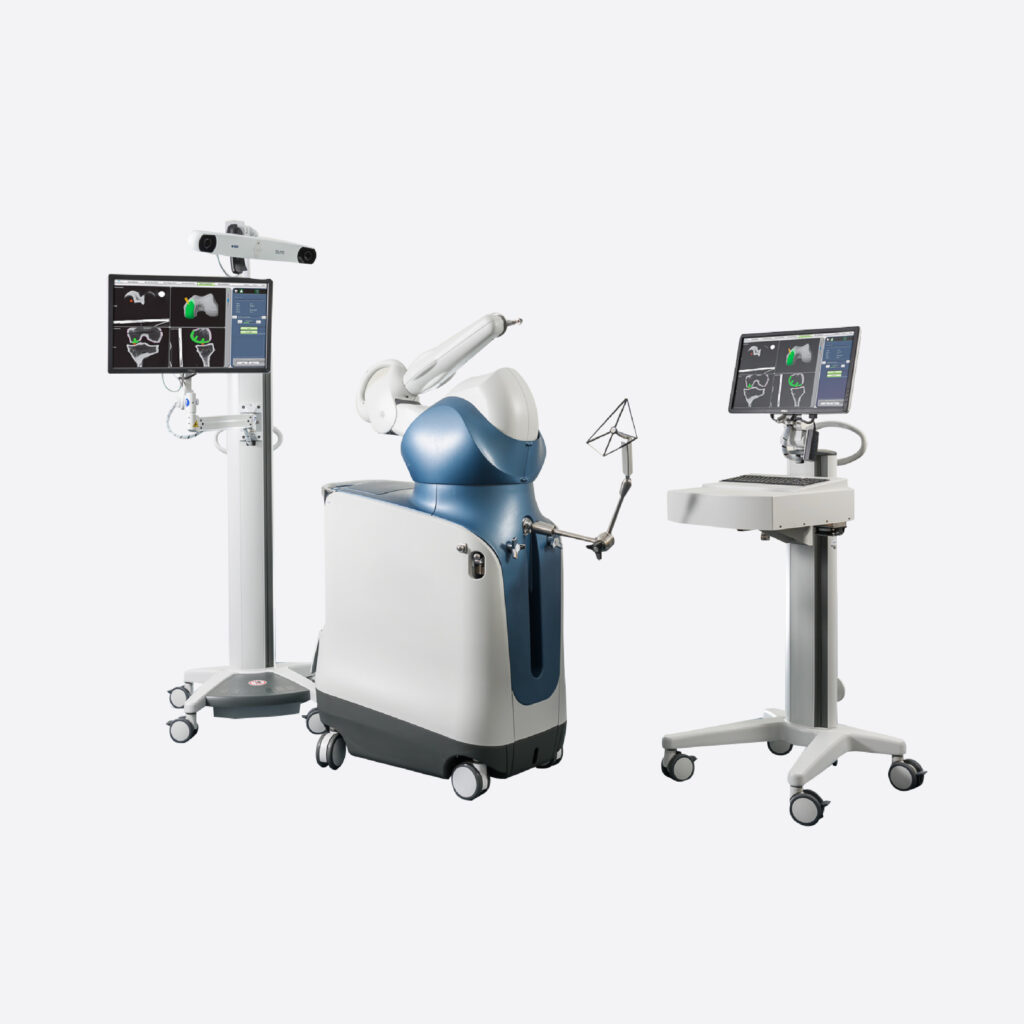Robotic-Assisted Knee Replacement Surgery

Generally, knee degeneration occurs due to accumulated usage over time. This condition is more common in older individuals and is often caused by age-related joint deterioration. In some cases, it can result from previous injuries or weight gain. Gender, specifically being female, is also a contributing factor. These factors combined contribute to the progressive degeneration of the knee joint.
In a healthy knee joint, the cartilage surface is smooth and allows for smooth movement. However, as knee degeneration progresses, small cracks and lesions may develop on the surface of the cartilage. As the disease advances, the knee joint deteriorates further, resulting in the complete loss of cartilage, forming pits and holes within the knee joint.
In the early stages, symptoms may be mild, with slight discomfort experienced during activities such as standing up or climbing stairs. However, as the condition worsens, pain and discomfort become more frequent and intense.
When knee degeneration reaches a stage where the cartilage is completely worn away, the most common treatment option is knee replacement surgery. During this procedure, the surgeon removes the damaged bone surfaces and replaces them with artificial knee joints. The prosthetic knee joint is designed to replicate the smooth and functional movement of a healthy knee, allowing patients to move without any hindrance.
In recent times, advancements in technology have introduced robotic assistance in surgical procedures. Robotic systems assist in increasing precision and reducing the margin of error during surgery. The robotic surgical system consists of a robotic arm equipped with a saw blade, controlled by the surgeon. The surgeon guides the robotic arm to perform the cutting and shaping of the patient's bone surfaces. This advanced technology ensures highly accurate and precise surgical cuts, with deviations typically less than 1 degree or 1 millimeter.
The robotic surgical system also allows for detailed preoperative planning. Traditionally, surgeons plan surgeries based on two-dimensional X-ray images of the patient. However, with the assistance of robotic technology, a CT scan is conducted beforehand to generate a three-dimensional model of the patient's knee joint. Surgeons can visualize the patient's knee joint as a 3D model, enabling them to plan the surgery accurately. This includes determining which bone areas to cut, the optimal placement of the prosthetic joint, adjusting angles and degrees, and selecting the appropriate size of the prosthesis. This meticulous planning ensures smoother surgeries, minimizing the need for muscle and tissue disruption, reducing postoperative pain, bleeding, and facilitating faster recovery.
One of the advantages of robot-assisted surgery is the ability to make smaller incisions. The increased precision provided by the robotic system allows for smaller incisions compared to traditional open surgeries. With enhanced accuracy, there is less need for muscle and tissue manipulation, resulting in reduced postoperative pain, decreased blood loss, and improved postoperative recovery.
For further information, please contact the Bone and Joint Center at 1645, press 1, extension 7470, 7471, or 7472.
Watch the clip
Knee replacement surgery part 1/2 https://www.youtube.com/watch?v=GRIUEq645d0&t=7s
Knee replacement surgery part 2/2 https://www.youtube.com/watch?v=ZB1hnLlx8t4
Freed from suffering from knee pain for 4 years with knee replacement surgery with a robot. https://www.youtube.com/watch?v=WEXCmT9Tsio
Author
Thonburi Hospital
Date 24.02.2023

